Nude paintings have a rich history, weaving through centuries of art, exploration, and human expression. From the Renaissance to modern abstract works, the nude form has been a recurring subject in art, symbolizing everything from purity and innocence to sensuality and power. The human body is a natural focal point for artists, as it reflects the deepest aspects of the human condition. Over the years, nude paintings have allowed artists to explore themes of beauty, vulnerability, strength, and identity.
We will delve into some of the best nude paintings of all time, highlighting their historical significance, artistic value, and the profound impact they’ve had on both the art world and society. Additionally, we will explore the different styles and approaches that have shaped nude painting throughout history, as well as the timeless appeal that continues to make these works relevant today.
The Role of Nude Paintings in Art History
Nude painting has been a vital part of the Western art tradition since ancient Greece and Rome. In ancient times, the human form was celebrated as the epitome of beauty, strength, and virtue. Classical sculptors like Phidias and Praxiteles crafted lifelike representations of the human body in marble and bronze, and these ideals were later translated into painting during the Renaissance.
Throughout art history, nude paintings have often explored both the aesthetic and philosophical aspects of the human body. In the Renaissance, artists like Michelangelo and Leonardo da Vinci used the nude figure to study anatomy and capture the beauty of the human form. During the 19th century, the Impressionists, like Édouard Manet, redefined the boundaries of the nude, incorporating it into modern art while questioning its traditional representation.
Whether romantic, sensual, or political, nude paintings have always been a vehicle for examining complex themes such as sexuality, identity, social norms, and the human psyche. These paintings serve as powerful expressions of how the human body has been viewed, revered, and sometimes objectified throughout different periods of history.
Top 5 Best Nude Paintings in Art History
While there are countless nude paintings that could be considered masterpieces, the following five stand out for their artistic excellence, cultural influence, and lasting impact on the art world.
1. The Birth of Venus” by Sandro Botticelli (1486)
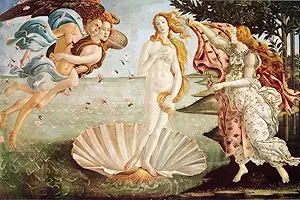
Style: Renaissance
Medium: Tempera on canvas
One of the most iconic images in Western art, The Birth of Venus by Sandro Botticelli represents the mythological birth of Venus, the Roman goddess of love and beauty. This painting is a classic example of Renaissance beauty, where the female nude is portrayed as ethereal and idealized. Venus is depicted emerging from the sea on a shell, her long flowing hair and delicate pose embodying the perfect form.
Botticelli’s Venus is not just a representation of physical beauty, but also an embodiment of divine love and purity. The painting is celebrated for its grace and its careful balance between mythological symbolism and artistic innovation. The Birth of Venus remains one of the most famous nude paintings in history, largely due to its timeless beauty and the artist’s exceptional technique.
2. “Olympia” by Édouard Manet (1863)
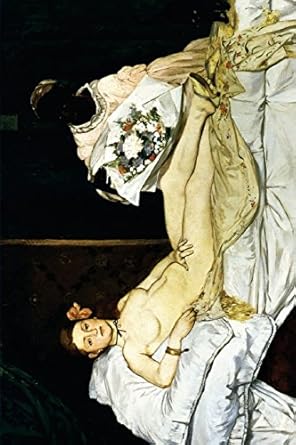
Style: Realism
Medium: Oil on canvas
Édouard Manet’s Olympia caused a scandal when it was first exhibited in 1865. The painting portrays a nude woman lying on a bed, looking directly at the viewer with a confident and almost confrontational gaze. The subject of the painting, a courtesan, is depicted in a modern, realistic style that broke away from the traditional idealized nudes of earlier periods.
Manet’s approach to the nude was revolutionary for its time. Rather than depicting a romantic or mythological figure, he presented a real, modern woman. This shift in focus to contemporary life and the bold, unflinching portrayal of the female nude challenged the conventions of the time and paved the way for later movements like Impressionism and Modernism. Olympia remains a powerful statement on the subject of female empowerment and sexual autonomy.
3. The Three Graces” by Peter Paul Rubens (1635)
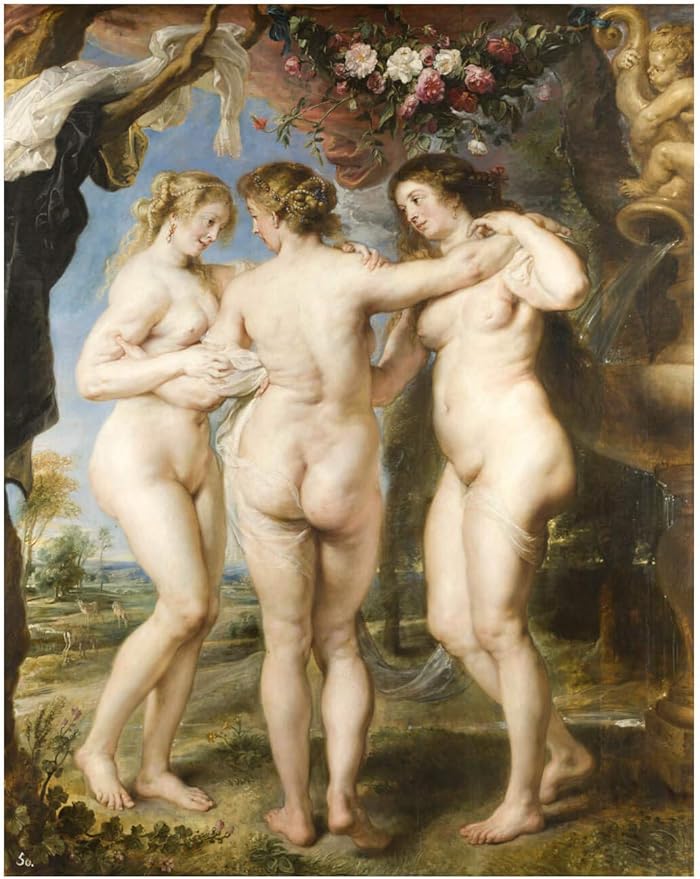
Style: Baroque
Medium: Oil on canvas
Peter Paul Rubens was a master of the Baroque style, and his depiction of the Three Graces—Aglaea, Euphrosyne, and Thalia—is a prime example of his skill with the female nude. The Three Graces, figures from Greek mythology, are depicted as plump, full-bodied women, celebrating fertility, beauty, and grace. The painting is imbued with sensuality, but it also represents an ideal of feminine beauty that was embraced during the Baroque period.
The lush and vibrant colors, dynamic compositions, and voluptuous forms are characteristic of Rubens’ work. In this piece, the female body is not just a subject of beauty but a reflection of fertility, femininity, and sensual pleasure. The Three Graces is a perfect example of how the nude form was celebrated during the Baroque era.
4. “Les Demoiselles d’Avignon” by Pablo Picasso (1907)
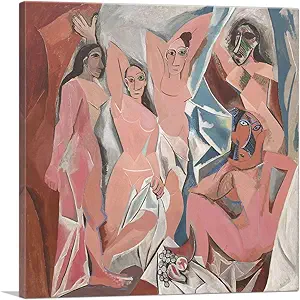
Style: Cubism
Medium: Oil on canvas
Pablo Picasso’s Les Demoiselles d’Avignon marks a turning point in the history of art. This groundbreaking work broke away from traditional forms of representation and is considered one of the most important paintings of the 20th century. The painting features five female nudes, but Picasso distorts their forms in a way that challenges the viewer’s perception of reality. The women are depicted with sharp angles, flattened faces, and angular bodies—an approach that laid the foundation for Cubism.
What makes Les Demoiselles d’Avignon so revolutionary is how it deconstructs the human form, turning it into a fragmented and abstract representation of the body. The painting’s bold, raw energy and departure from realism made it a controversial piece, but it also marked a shift toward modernism in art. Picasso’s work remains a fundamental moment in the history of nude paintings, pushing boundaries and redefining artistic representation.
5. “The Sleeping Venus” by Giorgione (1510)
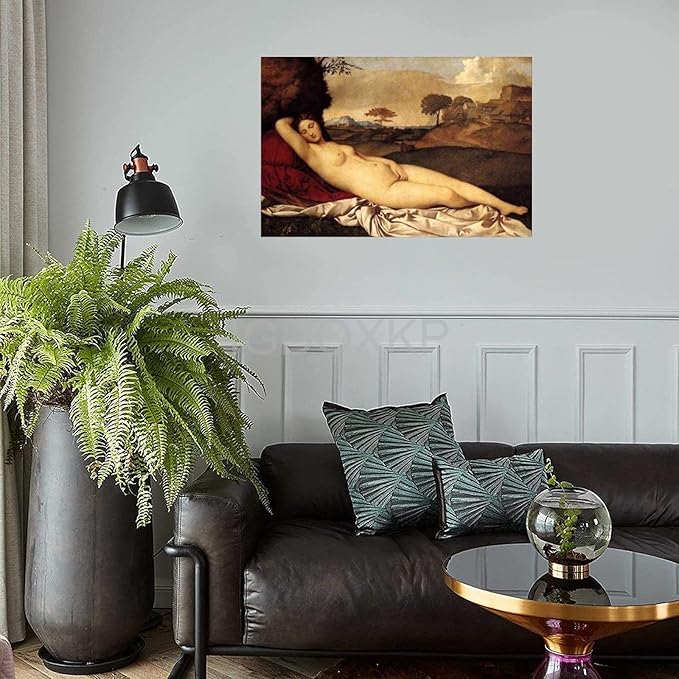
Style: High Renaissance
Medium: Oil on canvas
Giorgione’s The Sleeping Venus is one of the earliest and most serene depictions of the female nude in Renaissance art. In this painting, Venus is shown reclining on a bed of soft, flowing drapery, her body curved in a graceful, relaxed pose. Her nudity is rendered with such delicacy and naturalism that it seems both ethereal and grounded in the human experience.
The painting reflects the Renaissance fascination with classical ideals and the human body’s beauty. Venus is portrayed as the embodiment of love and femininity, yet her pose and expression suggest a sense of vulnerability and mystery. Giorgione’s skillful handling of light and shadow creates a timeless sense of tranquility that continues to captivate viewers today.
Frequently Asked Questions
1. Why are nude paintings considered important in art history?
Nude paintings have been a significant part of art history because they allow artists to explore the human form in all its beauty, complexity, and vulnerability. The human body has always been a symbol of various themes, including beauty, strength, sexuality, and identity, making it an essential subject for expression and exploration throughout art history.
2. What makes a great nude painting?
A great nude painting goes beyond just portraying the human body. It should evoke emotion, challenge perceptions, and tell a story or explore deeper themes. Technical skills such as shading, anatomy, and composition are essential, but the artist’s ability to convey meaning, beauty, and vulnerability also plays a key role in what makes a nude painting truly great.
3. Are nude paintings always sexual in nature?
No, not all nude paintings are sexual in nature. While some may depict sensuality or eroticism, many others explore themes like vulnerability, strength, beauty, and the human condition. The nude body has been used in art to convey a wide range of emotions and ideas, and not all of these are related to sexuality.
4. How did the depiction of the nude evolve over time?
The depiction of the nude evolved significantly throughout history. In the Classical period, the nude was often idealized, representing both physical and moral perfection. The Renaissance brought a more naturalistic approach to the nude, focusing on the beauty of the human form. In the modern era, artists like Manet, Picasso, and others deconstructed the human body in new and innovative ways, challenging traditional representations and exploring the body’s complexity in new light.
5. What is the significance of the nude in modern art?
In modern art, the nude has often been used as a vehicle for exploring themes like identity, gender, and the deconstruction of traditional norms. Rather than simply representing idealized beauty, modern artists use the nude to question societal views on sexuality, power, and the human experience.
6. Who are some famous artists known for their nude paintings?
Some of the most famous artists known for their nude paintings include Michelangelo, Titian, Peter Paul Rubens, Édouard Manet, Pablo Picasso, and Gustav Klimt. These artists made significant contributions to the portrayal of the human form and left a lasting impact on the art world.
7. How do I appreciate nude paintings beyond their sensuality?
Appreciating nude paintings requires looking beyond the surface. Focus on the emotions they evoke, the artist’s technique, and the cultural context in which the work was created. Pay attention to how the artist uses light, shadow, color, and composition to highlight the beauty and complexity of the human body, and consider the broader themes the painting might address, such as vulnerability, power, identity, or social norms.
Conclusion
Nude paintings have always occupied a central place in art, offering a canvas for exploring beauty, identity, power, and human emotion. From the classical ideals of the Renaissance to the modern abstraction of Picasso, the nude has been a means of both admiration and provocation. Whether rendered in soft, sensual tones or bold, fragmented forms, these works invite us to reflect on the complexities of the human experience and the ways in which art continues to evolve.
The best nude paintings, like those discussed above, continue to captivate viewers and inspire conversations, making them not just timeless but also relevant in the ever-changing world of art.

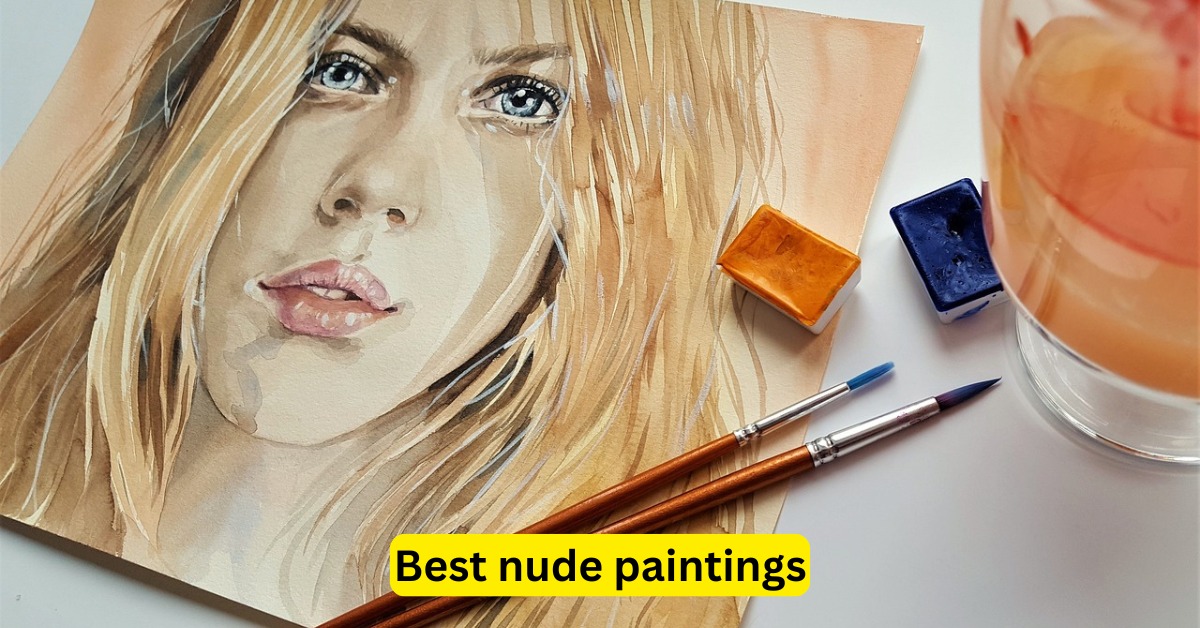
Leave a Reply